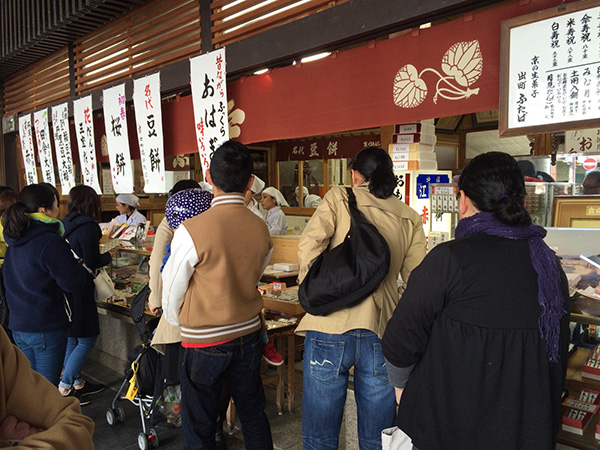
A long line for Futaba 2020 9 20
Sunshine Lee's Culture Essay Written in Poetry Demachi, the Neighborhood I Used to Live I grew fond of Seoul as I was born and raised there. I also grew fond of Washington D.C. as I went there to study and lived for almost 20 years. And I grew quite fond of the neighborhood near school in Kyoto where I recently studied. Now that I’ve graduated, whenever I go to Kyoto, even though I have only limited time , I automatically go to the neighborhood I used to live. It’s become a habit. The place was unfamiliar at first. I chose the place as it was only 10 minutes away on foot from Doshisha university, even so, it was tiny. I had heard that even though Japan is many times larger than Korea, the Japanese usually live in a small place. Even ministers live in a places as small as 60 m2. That is their modesty and their priorities in life are different from ours. Always reminding myself that I was there to study, I would come back home after the university library closed in the middle of the night, open the window wall and arrange twelve flowerpots on the floor according to color. That was my only pleasure. I am sorry that I didn’t take any pictures of them, but I still remember their loveliness. And there were a few perks of living in that neighborhood. First, Demachi shopping street was right in front of my place. Demachi shopping street had fresh and affordable products, so people came from far away. There are two large supermarkets inside the shopping street, so I learned which place was cheaper for which products. As there was a lot of homework, I usually ate at the school cafeteria. In the rare occasions I ate at home, I cooked brown rice with several kinds of beans and bought yuba, tofu, sushi, sashimi, cheese, fresh vegetables and fruits from a supermarket that had almost everything.. One of the things I enjoyed the most was this: They sold snapper, which is regarded as haute cuisine by the Japanese, and I bought the bulky remainder from filleted snapper, with all its head and lean meat, practically free of charge for Japan’s standard. I bought that, added white radish and a little bit of Japanese soybean paste, and just like that, fresh, tasty snapper soup was ready. Whenever I cooked snapper soup for my friends or fellow students they were impressed with the haute cuisine. There was a traditional medicine clinic which did consulting on invigorating people, and a bookstore, in Demachi shopping street. There were also udon restaurants and a restaurant famous for saba sushi made of mackerel. I liked ordinary sushi and sashimi, but I didn’t like sour saba sushi. I told one of my acquaintances in Seoul who was particularly fond of saba sushi about this famous place and they made a point of going to Kyoto so that they could eat at the place. The end of the Demachi shopping street led to a row of stores. One of them was the famous Futaba. People from the whole Japan came and made a line for Futaba – it was the most popular place in my neighborhood. Futaba of Demachi, whose mochi represents Kyoto, was founded in 1899. Its founder started the business from the hope of making mamemochi (bean rice cake) of Komatsu, Ishikawa (his homeland) take root in Kyoto. Now this specialty mochi has acquired great fame and been loved for over 100 years. Seeing the process of making the thing with my own eyes, and waiting in an awfully long line, all add to the taste of rice paste with black beans. The place was just a few steps away from my place, and I waited in a line for the place three times. It was when the line was relatively short due to heavy rain. I couldn’t cut in the line of several layers, and I didn’t have enough time because I had to study. People also wait in a line for a tea house across from Futaba. They put a few items like sweet red-bean porridge and rice cake in a cone – the shape is good, and soft ice cream inside is very tasty, so I eat that whenever I need sweetness in my heart. And next to the tea house, there is a flower shop with flower pots lining up the ground outside that I have always wanted to buy from. And I can see Kamomawa River from there. Kamomawa River is what I depended on the most while living in Demachi. Whenever I was overcome with homesickness, loneliness, or the burdens of my academic load, I ran to there. The river, which stretches for dozens of kilometers, is narrow in width. But its nature itself comforts me. People pick Kamomawa River as the best place for a date in Kyoto. Lovers, young families with babies, and the elderly come here. The old spring flower trees on each side blossom with spring flowers like cloud in spring with yellow-greenish willow leaves drooping over. Walking along the river which changes its scenery every season makes me feel lighthearted. Probably because there are so many places to see, there are not many tourists in Kamomawa River. A river in a city is a good thing. I also liked the fact that there was a river right across the street from where I lived in Seoul. One day, I was walking with a peaceful view of several mountains layered, and I didn’t feel like going back to Seoul even though I had to attend to a lawsuit in Seoul next day. Befitting its name – the 'kamo' in Kamogawa means 'duck' – ducks were hanging around in the river, and glossy ravens and kites were leisurely flying in the sky. There was a café named “BonBon” in the riverside which sold simple food like soup, French toast and tea. At the beginning of the term, I studied there eating French toast after class. The café was famous for being a filming location, and the sky, river and mountain with the Chinese character 大 engraved where fire was lit on August 15th, Japanese thanksgiving day, were visible through the wide window. On my way to school, which took about ten minutes, I started home carrying a backpack after hastily eating breakfast at eight thirty. Around the corner of where I lived, on the left side was a curry rice place where I sometimes ate. I turned right to pass tall trees above a long wall of Gosho which used to be the residence of Japan’s Emperor for a thousand years. On the right side, a hardware store whose owner was friendly to me talking about her teenager daughter when I bought trifles like a light bulb, and an elegant bakery from which I used to buy classy red bean bread every day. A little further from there is a hair salon where a lively young man cut my hair. I trimmed my hair once a month in Seoul, and every other month in Kyoto in that hair salon. And then a red brick building of Doshisha women’s university showed up. Walking briskly that way, the historical main gate of Doshisha University followed. It was built by Niijima Jo admired by all the Japanese 150 years ago, and poetry monuments for Dongju Yun and Jeong Jiyong, Korean poets, were standing there. Entering the main gate that the two of them would come and go in 1940, I was suddenly awakened and walked with a straight posture. I ran to the building of Kofukan classroom, where my first class was held, under the strikingly bright sunlight lightening the beautiful campus. That was how each deeply moving day started every day. Even now, whenever I go to Kyoto, I go to Demachi where I used to live, as well as school, and exchange greetings with my neighbors – owners of Aomori apple store (my mother’s poetry monument stands in Aomori), the tea house with cute and tasty homemade dessert, the father-son owners of Kitsune Udon place and the sunglasses shop. If life is a journey, they are friendly people that form a part of my journey and made my life warmer. They have never been to Korea, so think of Kim Jong Un when they hear 'Korea'. I am Korea to them, so looking broadly, this is Korea-Japan interchange. Each of their heart and facial expressions forms an impression of Japan to me, and I might have formed an impression, or a mirror of Korea to them.
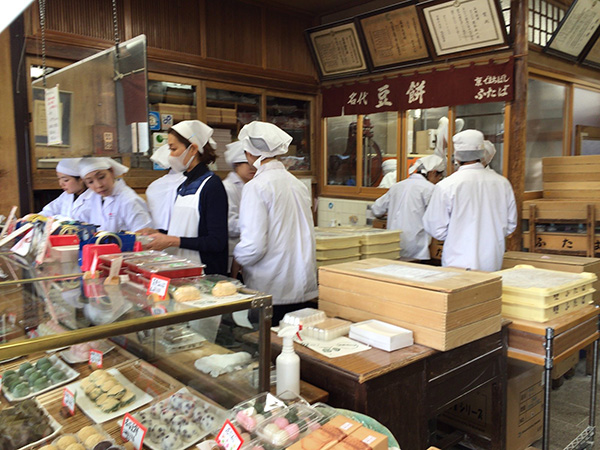
Demachi Futaba, a mochi place - Kyoto 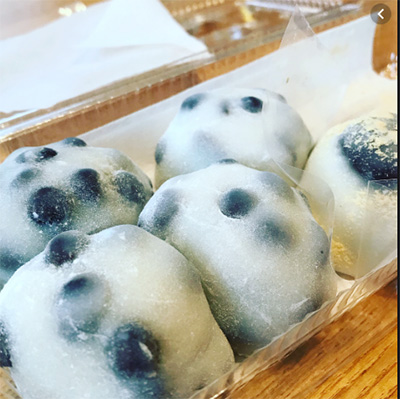
Mamemochi with black beans, Futaba’s specialty 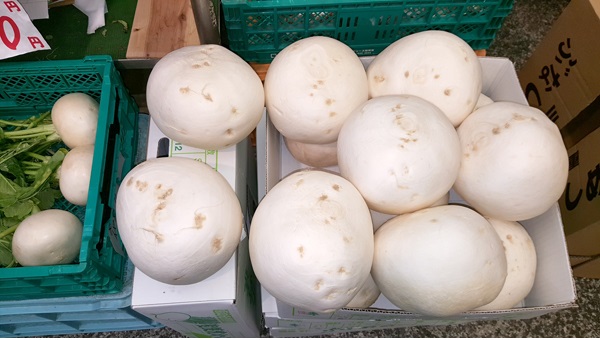
A round white radish as big as a human head, Demachi shopping street Kyoto 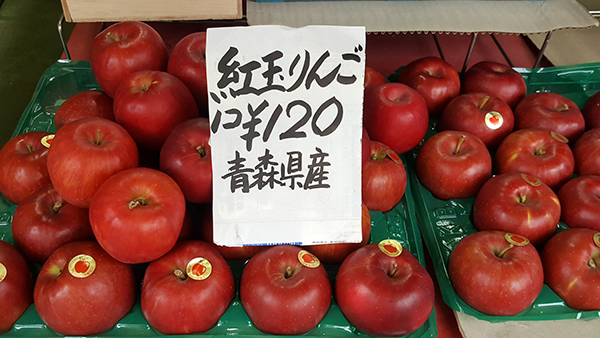
Aomori apples, number one in Japan - Demachi shopping street 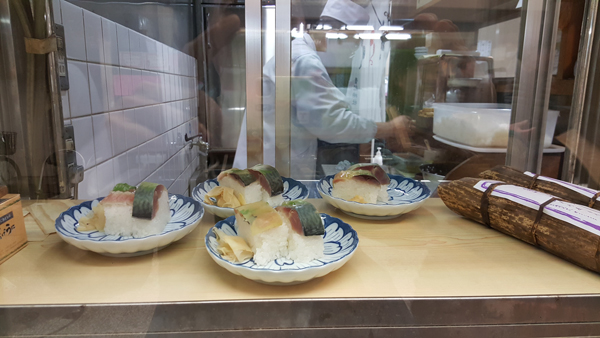 The famous saba sushi in Demachi shopping street 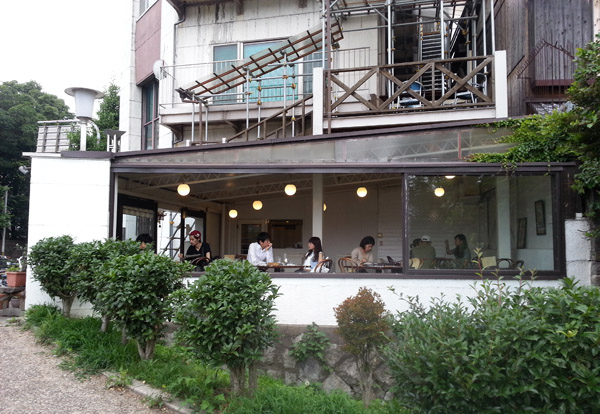
Cafe Bonbon in front of Kamomawa River 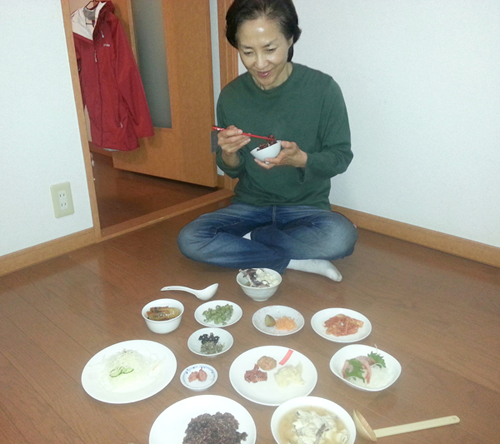
My dinner spread on the floor - Kyoto house 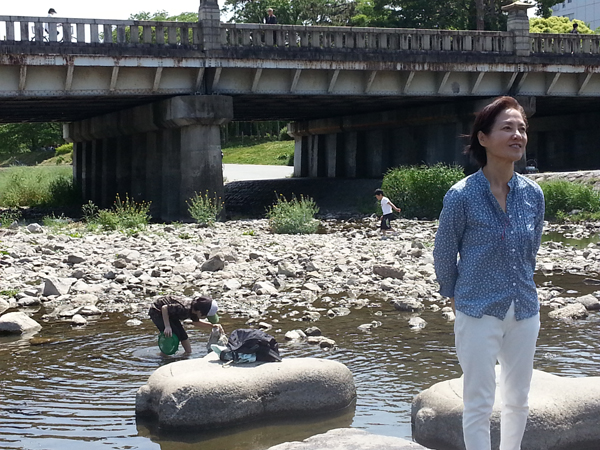
Kamomawa where I thought about how I would deal with living & studying May 2016 | 














